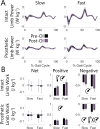Comparing the mechanical energetics of walking among individuals with unilateral transfemoral limb loss using socket and osseointegrated prosthetic interfaces
- PMID: 40119091
- PMCID: PMC11928544
- DOI: 10.1038/s41598-025-93211-1
Comparing the mechanical energetics of walking among individuals with unilateral transfemoral limb loss using socket and osseointegrated prosthetic interfaces
Erratum in
-
Correction: Comparing the mechanical energetics of walking among individuals with unilateral transfemoral limb loss using socket and osseointegrated prosthetic interfaces.Sci Rep. 2025 Aug 21;15(1):30722. doi: 10.1038/s41598-025-12202-4. Sci Rep. 2025. PMID: 40841803 Free PMC article. No abstract available.
Abstract
Osseointegration (OI), or bone-anchoring, of a prosthesis is a transformative procedure for addressing issues of socket fit among individuals with lower limb loss. Mechanically, the removal of the socket interface substantially alters the transmission of load and the flow of energy through the prosthetic limb. Here, we compared the mechanical energetics of walking between socket and OI interfaces using biomechanical data and custom models of 8 service members pre- and ~24-months post-OI. Relative to a socket interface, an OI interface shifted loads toward the intact limb, which increased collision losses, while the net mechanical work of both the prosthetic and intact limbs remained minimal for both interfaces. At the joint level, despite the removal of the socket interface potentially saving ~ 6 J of work per stride, these reduced collision losses were transmitted to the center of mass instead of altering joint work. The principal change in prosthetic limb joint mechanics with an OI interface was a decrease in negative prosthetic limb hip work during late stance, driven by a decreased hip flexion moment and prosthetic limb offloading. Our findings suggest that despite previously reported improvements in walking economy, after OI individuals likely walk with increased mechanical energetic asymmetry.
Keywords: Biomechanics; Bone-anchored prostheses; Ground reaction forces; Lower limb amputation; Mechanical work.
© 2025. This is a U.S. Government work and not under copyright protection in the US; foreign copyright protection may apply.
Conflict of interest statement
Declarations. Competing interests: The authors declare no competing interests. Ethics: All participants provided written informed consent and all protocols were approved by the Institutional Review Board at Walter Reed National Military Medical Center (Protocol WRNMMC-2017-0091).
Figures





References
-
- Zaid, M. B., O’Donnell, R. J., Potter, B. K. & Forsberg, J. A. Orthopaedic osseointegration: state of the art. J. Am. Acad. Orthop. Surg.27, E977. - PubMed
-
- Hagberg, K., Häggström, E., Uden, M. & Brånemark, R. Socket versus bone-anchored trans-femoral prostheses: hip range of motion and sitting comfort. Prosthet. Orthot. Int.29, 153–163 (2005). - PubMed
-
- Van De Meent, H., Hopman, M. T. & Frölke, J. P. Walking ability and quality of life in subjects with transfemoral amputation: A comparison of osseointegration with socket prostheses. Arch. Phys. Med. Rehabil. 94, 2174–2178 (2013). - PubMed
-
- Hagberg, K. et al. A 15-year follow-up of transfemoral amputees with bone-anchored transcutaneous prostheses. Bone Joint J.102-B, 55–63 (2020). - PubMed
Publication types
MeSH terms
Grants and funding
LinkOut - more resources
Full Text Sources
Medical

